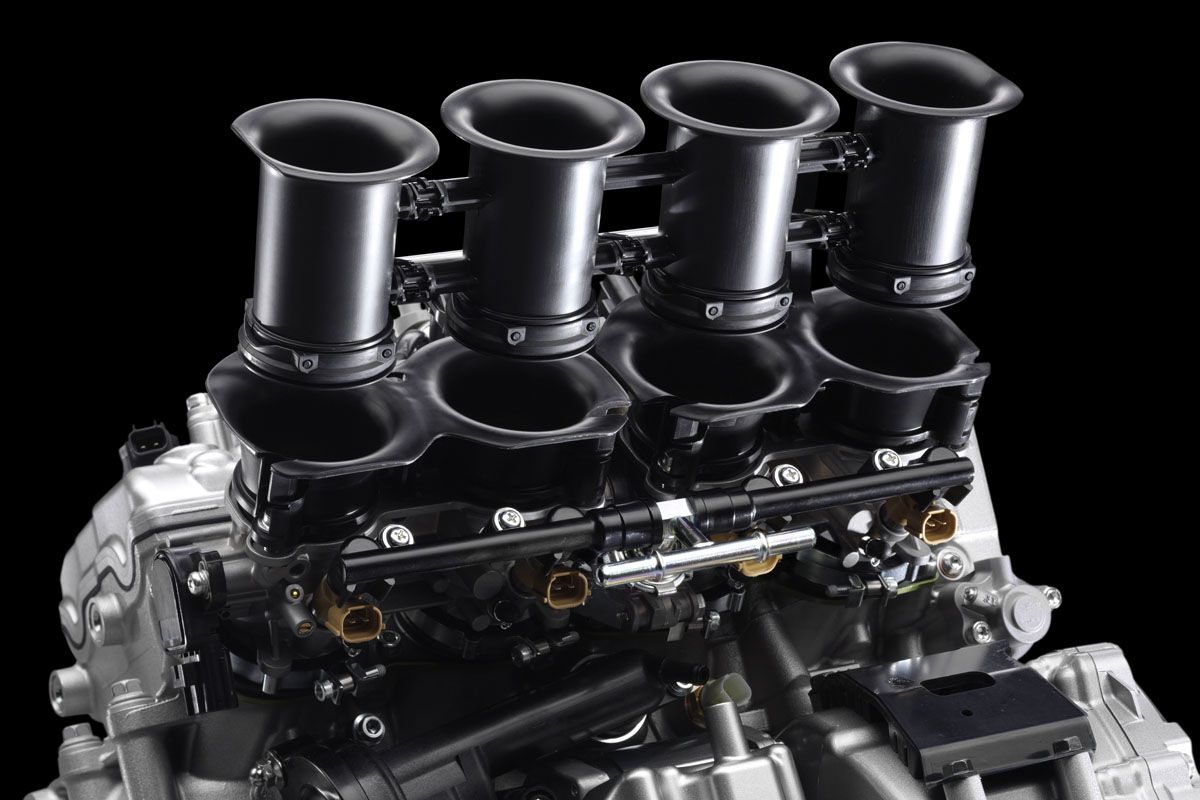Variable-length intakes increase the pressure of the air entering the intake manifold thanks to a physical phenomenon called Helmholtz resonance.
It's also known as dynamic supercharging since it avoids the use of a mechanical device (compressor/blower) to boost intake air pressure, which means the air enters the cylinders at a higher pressure. Needless to say:
▲ Air Pressure → ▲ Bang → ▲ Torque → ▲ Power
How does it increase air pressure?
Any air intake geometry has a certain Helmholtz frequency associated with it, just like how blowing over the neck of an open bottle produces a certain note or pitch.
At this frequency, the air molecules vibrate more, resulting in higher pressure.
So why does varying the effective intake geometry help?
Engine RPM will govern how often the intake valves open and shut. These valves generate pulses that translate to a frequency signature.
The idea behind varying the effective geometry is to get the Helmholtz frequency of the air intake to sync up with the frequency demanded by the engine over a range of RPMs.
This setup alters intake runner length
Much like how the Le Mans-winning Mazda 787B did.
The neat thing about this setup is its relative simplicity and robustness. Consider the 787B's trombone-like intake runners. The sliding motion between the two concentric pipes might be good in the short term, but I struggle to see how any mass-produced vehicle would feature this design; the interference between the two parts would require something special to last for an acceptable amount of time.
Which is why the setup in this Yamaha is sheer genius; it does away with the interference altogether while maintaining the benefits of the variable-length setup.
It's like an invisible, flexible wall. Awesome engineering!



